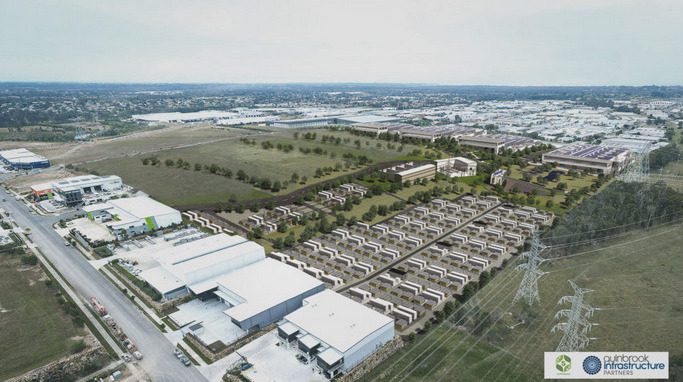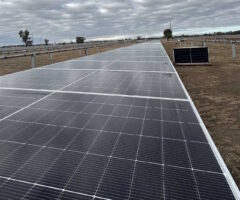The already giant Supernode battery project in the north of Brisbane is to treble in size after the developer Quinbrook Infrastructure Partners extended its off-take deal with Australia’s biggest utility, Origin Energy.
The first stage of the battery – sized at 250 MW and 520 MWh – is already under construction after the two companies announced an off take agreement earlier this year.
That partnership has deepened with Origin now signing for a major extension – this time a four hour facility sized at 250 MW and 1040 MWh. The extension will double the connection capacity of the battery to 500 MW, but triple its overall storage capacity to 1560 MWh, making it one of the biggest in the country.
Origin has signed up for all of the capacity for both the first and second stage of the project, a significant move as it ramps up its battery storage portfolio as it prepares to shutter the Eraring coal fired generator in NSW between 2027 and 2029, and moves from a reliance on “baseload” capacity to flexible capacity.
“The Supernode offtake will be an important addition to our growing storage portfolio, and reflects our belief that storage will play an important role in helping firm variable renewable energy supply and maintaining secure, reliable energy supply for customers,” Origin’s head of markets Greg Jarvis said in a statement.
Origin Energy has already made it abundantly clear that it sees no future for “baseload” power generators in a grid that will be dominated by variable wind and solar, with the gaps to be filled by a combination of battery storage, pumped hydro or other long duration storage, and fast-start generators that will be fuelled by gas or green hydrogen.
It is currently building a 460 MW, 920 MWh battery at Eraring, the first stage of what could be a 2,800 MWh project, and has revealed plans to build a 300 MW/650 MWH battery next to its Mortlake gas generator in Victoria and a 500 MW, 2000 MWh battery next to its Darling Downs gas generator at Dalby in Queensland.
It’s also a big coup for Quinbrook, which has focused on international markets but is now heading the Australian component of the massive Sun Cable project in the Northern Territory, and also has plans for a multi-billion dollar silicon production hub in Queensland to help secure part of the solar supply chain in Australia.
“Origin’s commitment to both Stages 1 and 2 speaks volumes to how strategically located the Supernode site is within the Queensland power system,” said David Scaysbrook, the co-founder and managing partner of Quinbrook Infrastructure Partners.
“The South Pine switchyard is the central node of the electricity network in Queensland, with an estimated 80% of Queensland’s traded electricity flowing through here every day. It’s hard to imagine a more ideal location for storage in the sunshine state,” he said.
Quinbrook says its Supernode site – so called because it hopes to also be a data centre – is the last non-flood prone land adjacent to the South Pine central node, and its proximity helps mitigate marginal loss factor and curtailment risk. It has a potential connection capacity of 750 MW, the company said last year.
“This is recognized by many in the industry as Queensland’s best site for a big battery, and we are pleased to be partnering with Origin in delivering several innovations in how we are integrating the key elements of this important storage project,” said Quinbrook managing director and regional leader of Australia, Brian Restall.
Quinbrook says the rapidly changing market dynamics created by the accelerating transition to green energy is creating immediate and substantial opportunities for battery storage technology.
It says the Supernode battery will be able to respond to market signals within milliseconds, and can earn revenue arbitraging spot market prices, selling cap contracts, or participating in frequency control ancillary services (FCAS) markets.
It notes that battery storate technology is also increasingly being called upon by network service providers to deliver vital grid support functions in exchange for payments under long-term bi-lateral contracts.
Around 10,000 MW of battery capacity, with varying levels of storage, is expected to be built in the state in the coming decade, as it seeks to reach its target of 85 per cent renewables by 2035.
See also Renew Economy’s Big Battery Storage Map of Australia for more information.
Note: This story has been updated to correct the battery supplier for the project.








